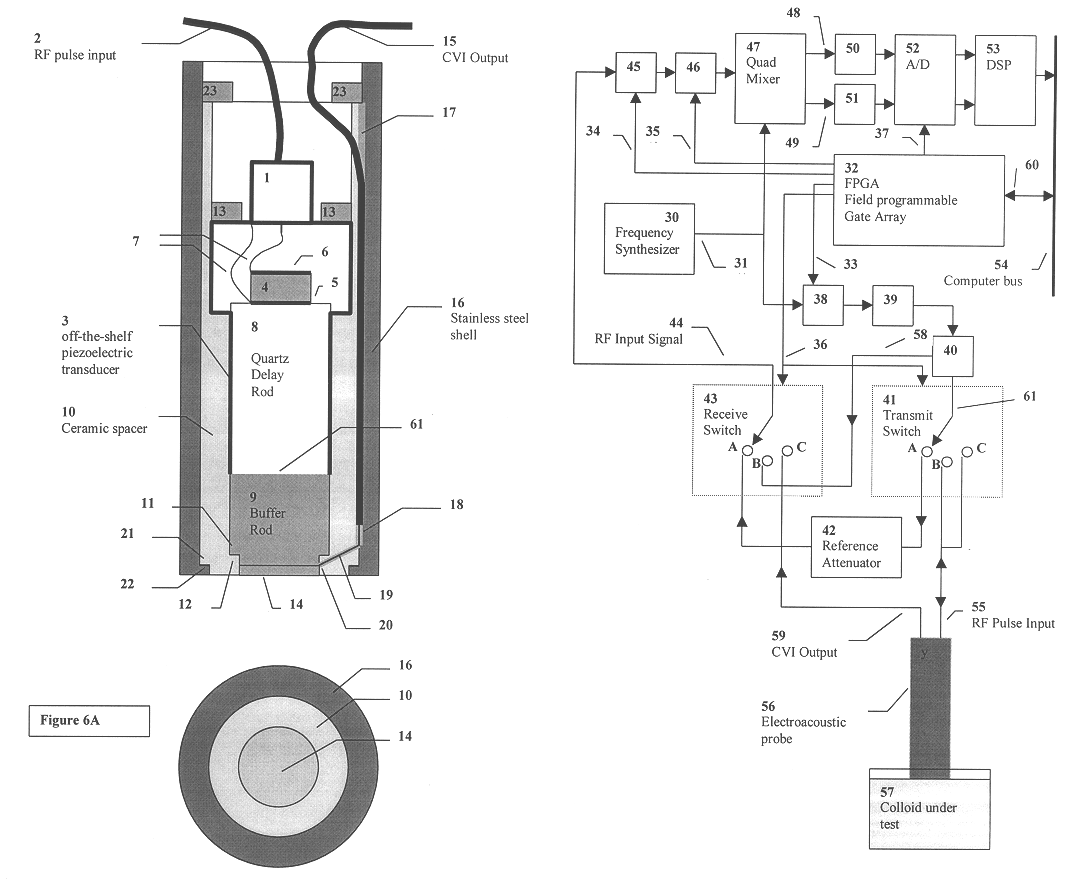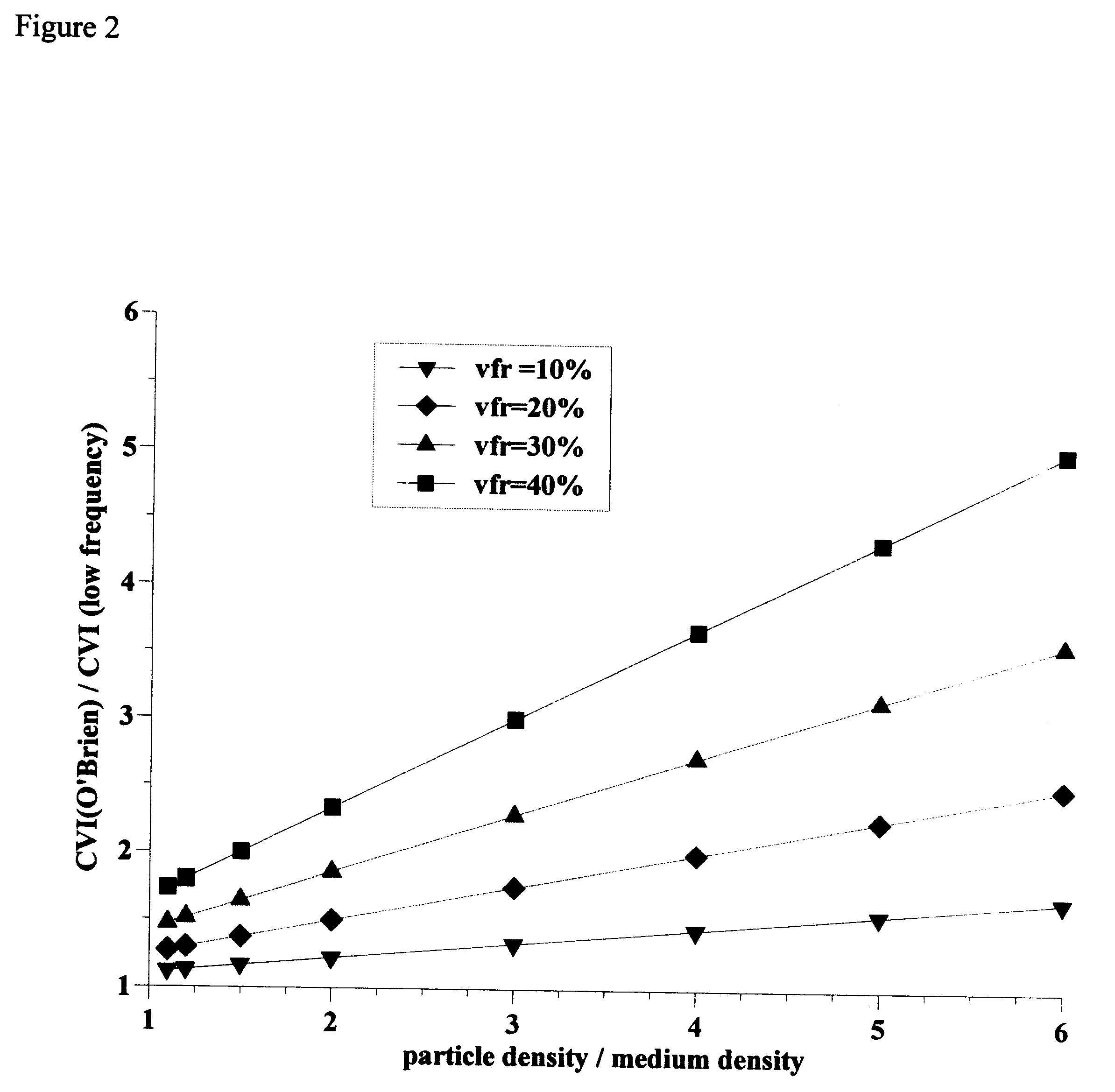Method and device for determining particle size distribution and zeta potential in concentrated dispersions
- Summary
- Abstract
- Description
- Claims
- Application Information
AI Technical Summary
Benefits of technology
Problems solved by technology
Method used
Image
Examples
experimental verification
of theory
Two different dispersions were used in order to test this new method of particle characterization. The first system was commercially available colloidal silica (Ludox.TM.) having a mean particle size of about 30 nm. Using small particles provides several important simplifications. First of all, the attenuation at low frequency for these small silica particles is negligible and consequently the exponential function in the Equation 26 equals one. Secondly, the sound speed varies less than 2% for weight fractions between 1 and 50%. This eliminates any effects from changes in acoustic impedance. Another important aspect is the absence of any particle size dependence (function G (a)=1). Altogether, this silica system allows us to check experimentally the low frequency theoretical limit without complications produced by sound attenuation or reflection.
The most pronounced effect at low frequency is the dependence of CVI on the volume fraction. Our results are very much different t...
PUM
 Login to View More
Login to View More Abstract
Description
Claims
Application Information
 Login to View More
Login to View More - R&D
- Intellectual Property
- Life Sciences
- Materials
- Tech Scout
- Unparalleled Data Quality
- Higher Quality Content
- 60% Fewer Hallucinations
Browse by: Latest US Patents, China's latest patents, Technical Efficacy Thesaurus, Application Domain, Technology Topic, Popular Technical Reports.
© 2025 PatSnap. All rights reserved.Legal|Privacy policy|Modern Slavery Act Transparency Statement|Sitemap|About US| Contact US: help@patsnap.com



